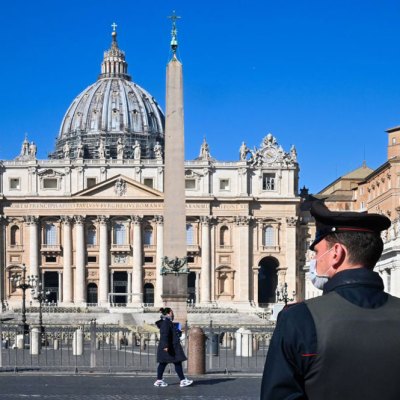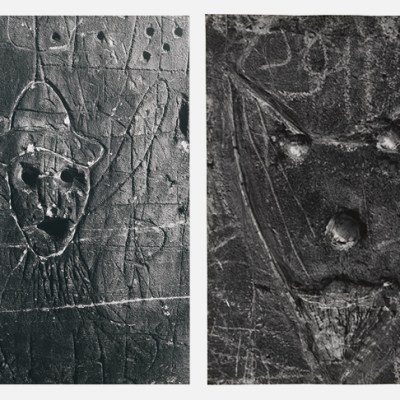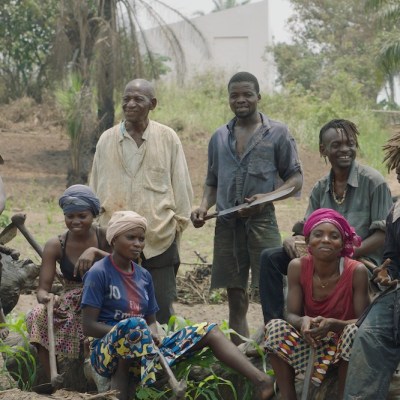From the April 2021 issue of Apollo. Preview and subscribe here.
The curfew every night at 6pm and the semi-lockdown we have been living under since October have left Paris often looking like it did in the eerie images of Eugène Atget (1857–1927), one of its most important photographers. This has not been lost on those who live here. A newspaper recently ran a comparison of shots showing Paris confiné with the French capital as seen by Atget at the turn of the last century. Walking through it today, particularly when there is nobody around, can feel like following in the footsteps of that solitary and mysterious man who roved these streets for more than three decades. All we need do is remove the Tour Montparnasse, the Vélib bicycles and the fluorescent electric scooters scattered everywhere.
Atget began to photograph the city in a systematic fashion in the 1890s. He classified all his work, which totals around 10,000 images, in a labyrinthine collection including the themes ‘Picturesque Paris’, ‘Art in Old Paris’ and ‘Topography’. Many of his photos were orders from personal clients and he also worked as an independent photographer for the the Commission du Vieux Paris that had been launched a decade earlier to preserve the city’s heritage by documenting all its aspects. Old Paris was always Atget’s subject, however, and distinguishing between made-to-order material and the photographs he took for himself is remarkably difficult. As Éric Hazan points out in The Invention of Paris, the photographer’s independence of spirit and eye took over in everything he did.
Sign at the corner of rue des Lavandières-Saint-Opportune and rue Jean Lantier, 1st arrondissement (1914), Eugène Atget. Musée Carnavalet – Historie de Paris. CC0 Paris Musées/Musée Carnavalet – Histoire de Paris

I think of Atget as I stand at the top of a grim spiral stairway leading down into Les Halles. Behind me is the church of Saint-Eustache and to one side the old stock exchange building that now houses the Pinault Collection – opening ‘soon’ as the posters have been telling us for several months. At the foot of the stairs are the swimming pool and the UGC cinema with its 27 screens that are all shut. Across the little wall next to the stairs, a line of graffiti catches my eye. It is sprayed in black, child-like handwriting: Façade noircie par le temps (‘facade blackened by time’). A woman standing next to it is puffing away on a cigarette, her mask hanging from her ear. This is not a happy sight. But in Atget’s day such a phrase was merely a descriptor. Every facade in his photos is blackened by time, and all the better for it because at the heart of his work are these traces of life, captured in inanimate objects. I am glad he did not live to see André Malraux’s clean-up of the city, which removed the sooty layers from so many buildings, including Saint-Eustache behind me, its sandstone gleaming in the sunshine.
We can admire many blackened facades in the photographs collected in the book Atget: Voir Paris, which has been published by Atelier EXB to accompany an exhibition at the Musée Carnavalet (delayed due to the pandemic). For the show the curators Anne de Mondenard and Agnès Sire have selected 146 photos from the Carnavalet’s holdings, all of which appear in the book with their original borders included, a first, which gives the material a three-dimensional quality. I am struck by how calm and contemplative these photos are, whether the subject is a shop or a street, or even a worker in the ‘small jobs’ (petits métiers) series of street vendors, rag pickers, knife-grinders and basket sellers. And this is where any comparison with the lockdown images of Paris falls away. There is nothing peaceful about today’s confined city. Images of empty streets and shuttered cafes are grim reminders of the pandemic extinguishing the ‘city of light’.
Atget roamed the city with his bulky, large-format bellows camera, tripod and 18 by 24cm glass plates. He never joined any group or allied himself with a particular movement. We know virtually nothing about how he saw his work, the only indication being in the way he organised himself – going out to take photos according to certain themes, and then afterwards further classifying and refining his arrangement. At first he concentrated on picturesque Paris but over the years, as he explored more of the city, his subjects evolved. By his final years he was focusing on the poverty he found on its edges. There are some letters too, notably one he wrote in 1920 to Paul Léon, the director of the École des Beaux Arts: ‘I can now say I possess the whole of old Paris.’ But ‘I am worried and tormented,’ he told Léon, ‘by the future of this lovely collection of images that could fall into hands that have no notion of their value and could eventually disappear, having been of benefit to no-one.’
Atget need not have been so tormented about the fate of his work. In 1927, the last year of his life, Berenice Abbott (who had been introduced to Atget’s work by Man Ray) took his portrait – from the side, sitting slouched and looking somewhat destitute, and from the front appearing rather more distinguished but still every bit his 70 years. Abbott could never give Atget her portraits, as he died soon after she took them, but instead she bought more than 1,000 negatives and some 5,000 prints that were left in his studio. In 1968, MoMA purchased this collection, and in the same year became the first institution to put on a major exhibition of his work. Consequently, much of the scholarship on Atget is anglophone and he has influenced generations of American photographers, from Walker Evans to Lee Friedlander. There was a period in the 1990s when some art critics called into question the status of his photographs as art, insisting they should be considered as an archive. But such a distinction has never stuck. A closer look at the photographs confirms the eye of an artist, perceptible in the angles he chose when taking a photo of a building or a park bench, including more in the frame than would be typical, or in the small details he was drawn to and the delicate reframing of a classic scene.
18 and 20, impasse Masséna, porte d’Ivry, 13th arrondissement (1910), Eugène Atget. Musée Carnavalet – Historie de Paris. CC0 Paris Musées/Musée Carnavalet – Histoire de Paris

Take, for example, the ‘Vins, Liqueurs, Épicerie’ facade at the Porte d’Ivry in the 13th arrondissement. For the purposes of his professional mission it would have sufficed to photograph it straight on, but Atget captures it from the left, to include a side alley that is framed by three trees and where a little cat crouches on the dusty path. Or in another photo of a street corner in the 1st, a printing shop is pictured from the side, with only its slim, elegant Typographie sign visible on a black wall. The shop would have been the subject in any other photo of this type, but Atget’s image is mostly taken up by the wide, cracked pavement and cobbled road, where far in the distance a parked cart is packed up high with crates. In Atget’s world empty streets are richly suggestive of life, not the signposts to gloom that today’s photographs of lockdown Paris represent.
From the April 2021 issue of Apollo. Preview and subscribe here.


